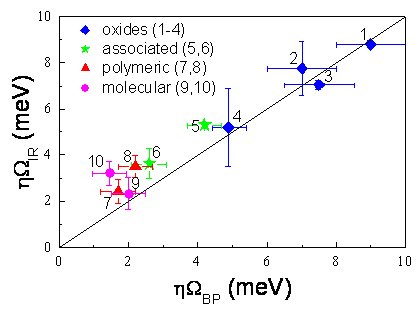Rechercher
Accueil > La Recherche > Axes & Equipes > Matière Molle & Verres > Equipe : Physique des Verres > Thème : Structure, vibration, relaxations dans les systèmes désordonnés
Glass-specific behavior in the damping of acousticlike vibrations
publié le , mis à jour le
Involved researchers : B. Rufflé, G. Guimbretière (PhD), E. Courtens, and R. Vacher
(Collaboration G. Monaco, ESRF, Grenoble)
High frequency sound is observed in lithium diborate glass, Li2O-2B2O3, using Brillouin scattering of light and x-rays. The sound attenuation exhibits a non-trivial dependence on the wavevector, with a remarkably rapid increase towards a Ioffe-Regel crossover as the frequency approaches the boson peak from below. An analysis of literature results reveals that the boson-peak frequency is closely related with a Ioffe-Regel limit for sound in many glasses. We conjecture that this relation, specific to glassy materials, might be rather common among them.









